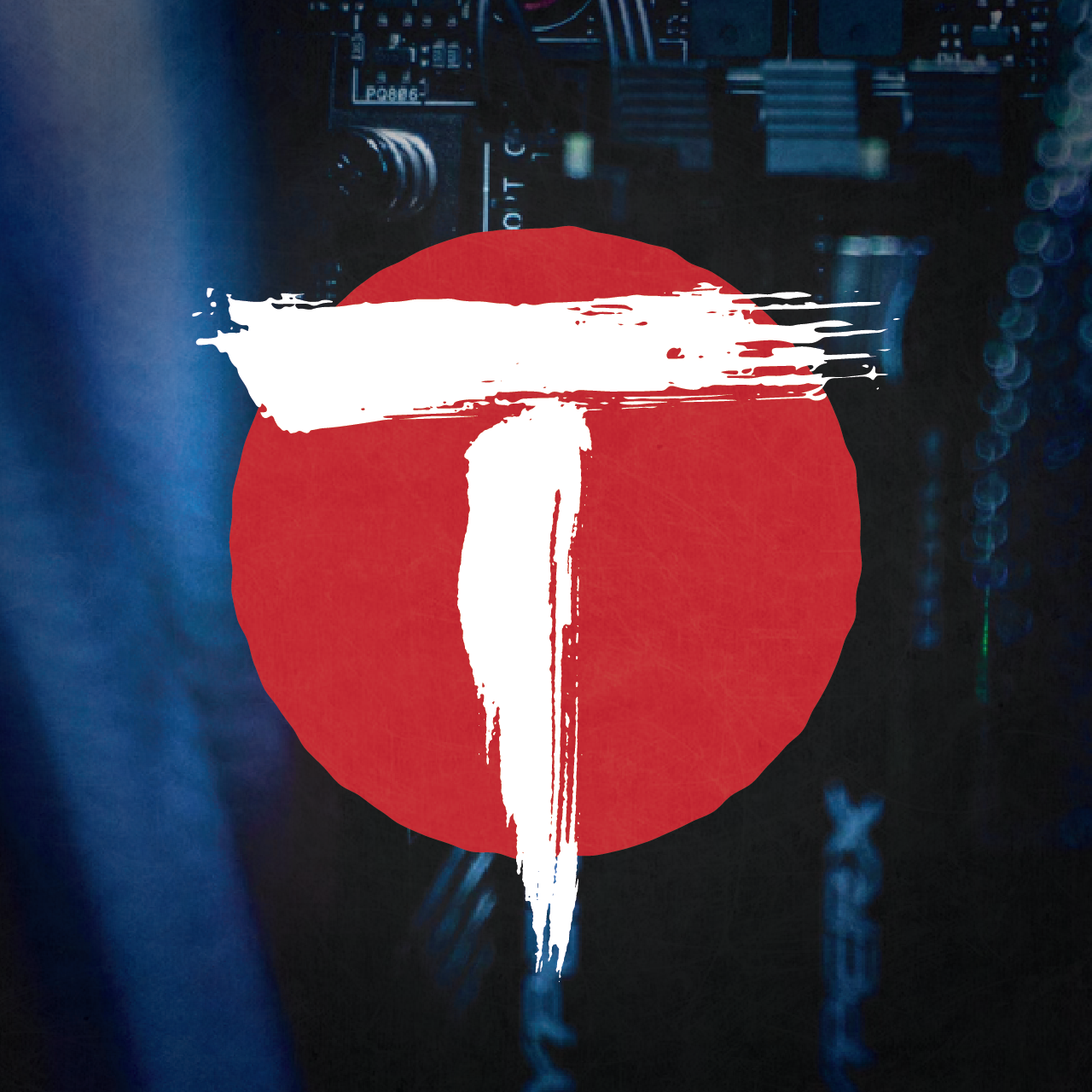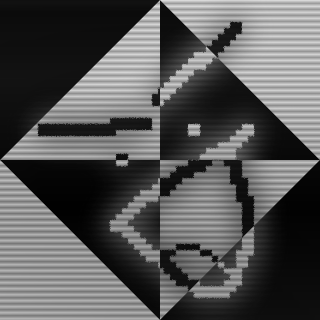And if so, how do they label headphones, contact lenses etc?
In French it’s Gauche and Droite so no problem here, but every product is labeled L&R because we live in a global market and English is clearly the dominating language. Most consumer product are made in China for the entire world so my guess is everybody understands L&R at this point.
Also, at this point, it might just ingrained in people there is a L-side and a R-side which correspond with their equivalent of left and right even without knowing English. It can be abstracted as consistent symbols if nothing else.
Now the question becomes, is there a language where the word for “left” starts with R and “right” starts with L?
Indonesian does; kiri (left) and kanan (right). “Ki” and “Ka” are usually used in texts (e.g., for captions in newspaper/magazine articles), but for headphones, contact lenses, etc it’s normally just L/R.
Turkish:
Left: sol, right: sağ
And the products are labeled L and R
I’ve found:
Malay: kiri (left) and kanan (right)
Though Malaysian headphones are usually labelled L and R too
Kaliwa, Kanan (left, right respectively)
Edit; this is in the Tagalog language, we use English for our gadgets
We use English for almost everything tbh.
Hindi ko nga naisip yung Kaliwa Kanan kung di ko pa nabasa itong comment lmao my English speaking brain
Not sure about languages but do headphone letters actually get translated? I’ve always seen them as L-R.
I have never seen it ether.
Most people in first world countries will probably understand ‘L’ and ‘R’ anyway. But hypothetically, the problem could probably be solved by adding another letter, the same way we know that ‘T’ is for ‘Tuesday’ and ‘Th’ is for ‘Thursday.’
I work with a lot of nonnative English speakers, and someone sent out an invite to a meeting on Thueisday and my brain melted.
Removed by mod
the same way we know that ‘T’ is for ‘Tuesday’ and ‘Th’ is for ‘Thursday.’
As a non native speaker I have to admit I actually didn’t know that.
But in German you also use two letters for all the weekdays.
Mo, Di, Mi, Do, Fr, Sa, So.But it is a popular riddle for children to ask M, D, M, D, what comes next?
I’ve seen systems in university use T for Tuesday and R for Thursday but they needed to print to paper with a single character wide column for day
Still, most people understand if I use MTWRF
Why R and not H?
For people who use comically thick Irish accents and say “Tursday,” I have to assume.
You might be onto something.
Chinese I think?
- Left - Zuǒbiān
- Right - zhèngquè de
Not sure if that counts, considering it’s using the Latin alphabet and the language is tonal, etc.
EDIT: and Ilocano:
- Left - kannigid
- Right - kusto
EDIT2: and Indonesian:
- Left - kiri
- Right - Kanan
EDIT3: and Irish:
- Left - chlé
- Right - ceart
Going to stop now. I’m literally just choosing languages in google translate.
Ah the dangers of Google translate and synonyms. You got the wrong definition for right when translating to Irish, the one you have means correct, deis is the word for right (direction). Clé is left, the h appears in certain contexts for grammatical reasons.
you know… I’m kinda surprise Google Translate hasn’t caused WW3 yet.
Sorta the concept behind Twisted Translations, previously known as Google Translate Sings. Though they are intentionally getting a bad result by feeding the Translations through several languages before coming back to English.
well that wasted more hours than I’m willing to admit to my boss, thanks for that.
Amazingly, the Dutch version of SharePoint has made this mistake. There is an option, I believe when making columns on a page or something, for “Links” (left) and “Goed” (right/correct).
Seems like if OP would have translated “turn” and then left or right, it would’ve gotten closer
Chinese is also not right - 正确的 (zhèngquè de) means “proper”
Left and Right as the sides are 左 (zuǒ) and 右 (yòu) - you can also add 邊 (biān) to each which means “side” to be more explicit, but they are also used separately in many contexts where the left/right meaning is needed.
The Chinese characters for 左 and 右 actually originated as pictograms of the left and right hand in the early forms of Chinese writing, but later forms both contain general “hand” component (𠂇) with components 工 and 口 added for differentiation
There’s also Filipino:
- left - kaliwa
- right - kanan
also we use L and R for things because we speak English too.
I like this question because I haven’t found an AI answer this question correctly yet. They all give wrong answers.
It’s because of the way an LLM works, they’re completely blind to things like what a word starts with. Ask it something like “List 10 words that start and end with the same letter but are not palindromes.” and it completely shits the bed, because it can only process words as unified tokens, it can’t look inside the words to see how they’re structured.
- Accordion
- Antenna
- Banana
- Character
- Deceived
- Elephant
- Greening
- Harbinger
- Insignia
- Knowledge
GPT-4, prompt: “List 10 words that start and end with the same letter but are not palindromes.”
Even without the palindrome condition, it got some of these and a few palindromes.
It missed 7/10. That’s about the same as random I’d say.
According to your logic, 30% of words would satisfy this property.
They don’t process words as unified tokens for something like an LLM, but they do process them as multi-letter encoding, like byte-pair encoding or more advanced techniques.
Thisways and thatways ?
In Chinese/Japanese they may not necessarily start with the same letter but they look kind of similar:
右 vs. 左, might mistake them if you aren’t wearing your contacts :P
Not exactly what you’re looking for, but in Esperanto the words for right and left are “Dekstre” and “Maldekstre” which roughly translates to something"right" and “anti-right” so while the first letter is different they both have the same root word, which is something I don’t think a lot of languages do in this case.
As far as labeling headphones and such, it’s not really an issue since I don’t think anyone is making products with Esperantists in mind.
I didn’t have to scroll too far in Google translate to find that Arabic for left and right is yasir and yamin (in the Latin alphabet, it’s يسار يمين in Arabic which seems to start with different characters anyway) but my guess is that things would be labeled with S and M.
which seems to start with different characters anyway
Remember that Arabic is right-to-left—both words start with ي (yeh).
which seems to start with different characters anyway
It doesn’t - Arabic is written right-to-left, both words start with ⟨ي⟩ (it looks like ⟨ﻳ⟩ there).
It’s yasar and yamin and yes, they both start with the same letter but alternatively you can use chamal ( north) for left. It’s archaic and rarely if ever used in modern days but it fix this problem that isn’t one in the first place because you can print the whole word since their shape alone allow for an easy and fast identification, use the left right symbols with a tilted tail or just use L&R for arabic nations with English as the main foreign language and G&D for the ones where it’s french.
Levantine Arabic says shamal شمال but that’s might be too slangy for labelling.
Only Levantine? Al Qur’an seems to prefer شمال for left so I thought that’s what will be in MSA. I have never heard يسار for left before.
I don’t know, to be honest - I’m no expert, I just learnt some Arabic whilst living in Jordan.
Depending on the language I wouldn’t be surprised if they annotated it as D[exter] and S[inister] and called it a day.
“Vänster”, left, and “höger”, right, in Swedish.
Last time I checked V and H were different letters.
No tvey aren’t
I’m hery sure tvey are…
(actually tvis works quite good, I tvink I will use tvis for a hocal quirk for a dnd-npc)
Actually sounds like a good plan.
Missunderstood the question, sorry.
That’s how it was when I learned the alphabet too, and I even learned it in Swedish, and last I checked we have not decided to change it.
But for headphones we use L-R.












